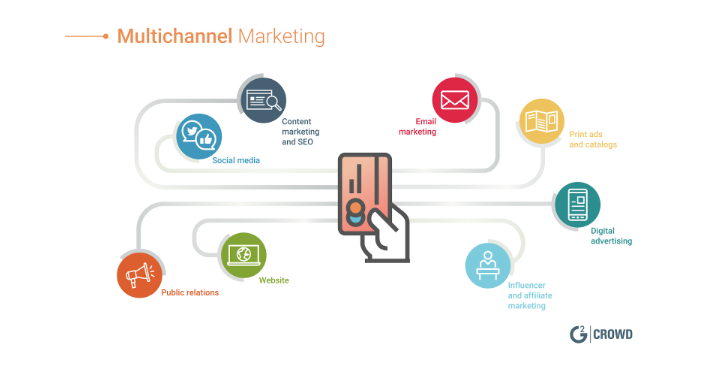Omni-channel is a marketing buzz word which has been around for some time now. But what does it actually mean and is it still relevant in 2020?
Is omni-channel the same as multi-channel and if not, how do they differ?
As their names suggest, both involve multiple channels. In multi-channel marketing, the goal is to extend your reach as far and wide as possible, across as many different platforms and marketing touch points.

In omni-channel marketing, the goal is to combine all these different channels and connect them together to nurture your customer or prospect through the buying cycle towards a purchase. An optimised customer journey is a crucial part of any omni-channel strategy as is personalisation and deciding the next best action based on behaviour.

So, why consider adopting an omni-channel strategy?
Every experience with your brand should be positive and as consistent as possible – be that with a Sales rep, a customer service advisor or via your marketing communications. Omni-channel puts the customer journey first, involving different touch points and relevant next steps, at the right time, which leads to the overall buying experience feeling more natural. Below are some statistics on the results of a single channel vs omni-channel approach:
- Campaigns integrating 4+ digital channels will outperform single- or dual-channel campaigns by 300%. (Gartner Research)
- Engagement rate: 18.96% on omnichannel vs 5.4% on single-channel. (Omnisend Annual Report for 2019)
- Purchase frequency: 250% higher on omnichannel vs single-channel. (Omnisend Annual Report for 2019)
- Average order value: 13% more per order on omnichannel vs single-channel. (Omnisend Annual Report for 2019)
- Customer retention rates: 90% higher for omnichannel vs single-channel. (Omnisend Annual Report for 2019)
What do I need to do to ensure my omni-channel marketing is successful?
- Map out the customer journey along with the sales & marketing touchpoints and channels you want to employ at each stage.
- Do some analysis on the highest performing assets at each stage of the journey and bring that research into your planning.
- Define your audience and identify their main pain points. Align your touchpoints and the assets you serve up to those pain points.
- Ensure the right message is conveyed at the right time and in the right format. For example, you wouldn’t send a 50-page technical white paper at the start of the journey.
- Consider including conversational marketing in the mix with a platform like Drift. A ChatBot is a far less invasive method of building up a customer profile which in turn will enable a more personalised approach.
- Put the customer front and centre. This is the most important point. While a customer-first approach has been used far and wide in B2B marketing, this mindset must also apply to your omni-channel marketing strategy.
- Align your Sales and Marketing teams. These teams share a common goal: get more customers for your business. Seek input from Sales on which campaigns and themes are the most popular, common pain points.
- Collect feedback from Sales calls and gain intelligence about your prospects.
Final thoughts: don’t be afraid to be omni-present
By strategically segmenting and mapping out the journey you want for your prospects and customers, you’ll create a high-performing, effective, data-driven omni-channel strategy that ultimately generates more high-quality leads for your business – all while improving your brand image. What’s not to like?
Written by Joanna Mills – Business Development Director, CRMT